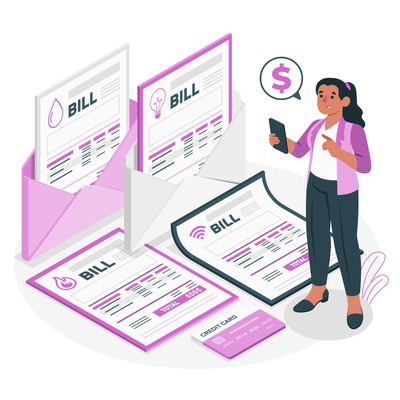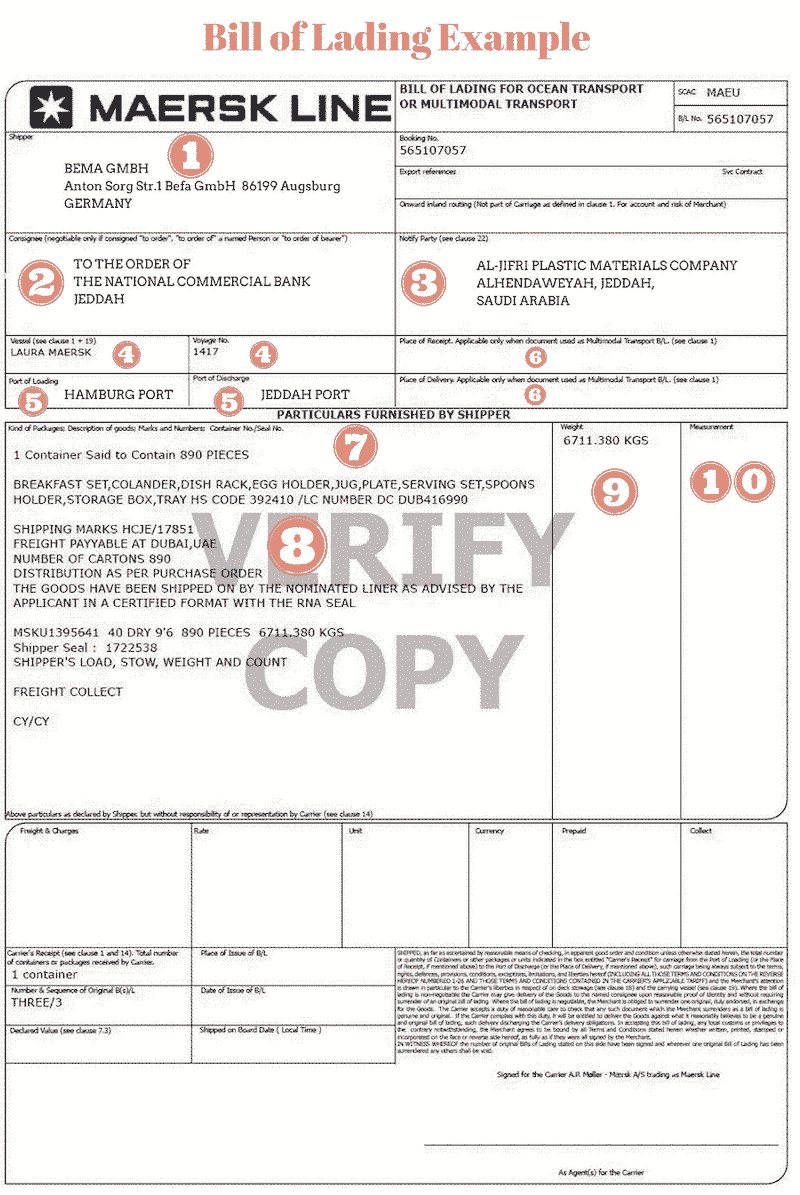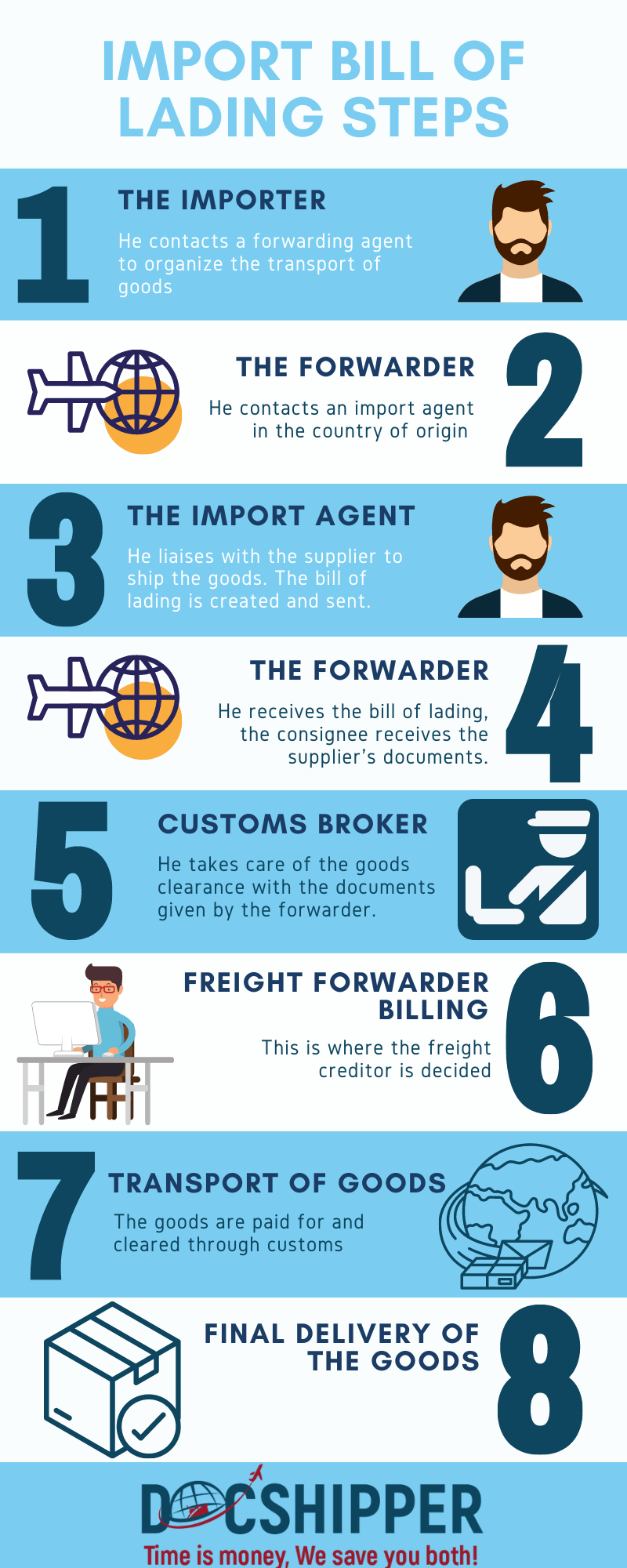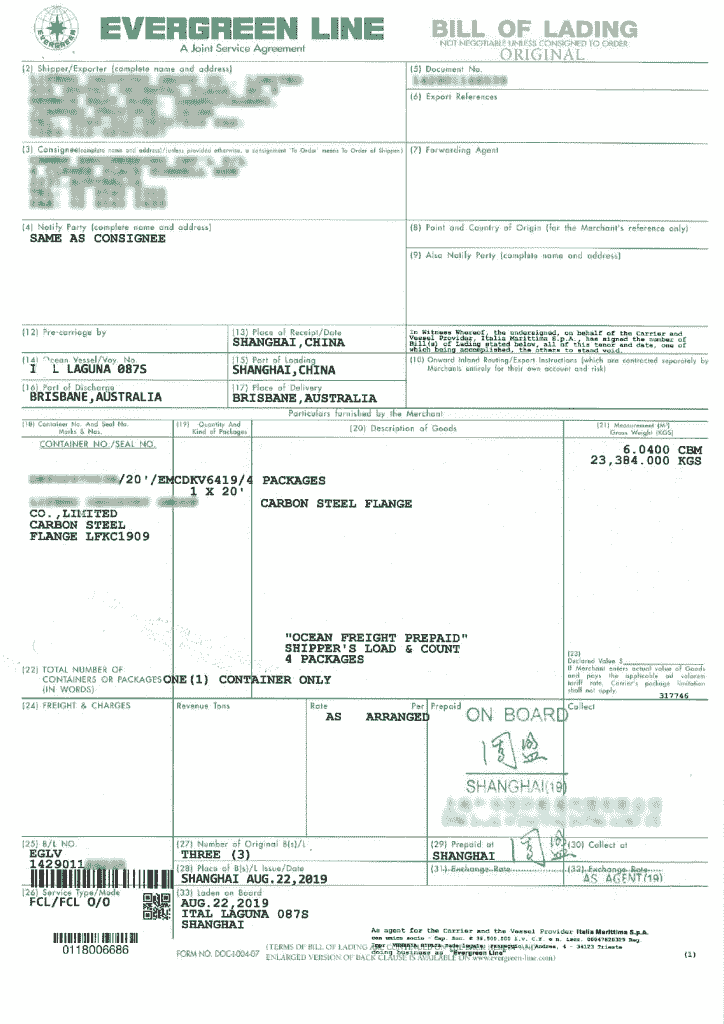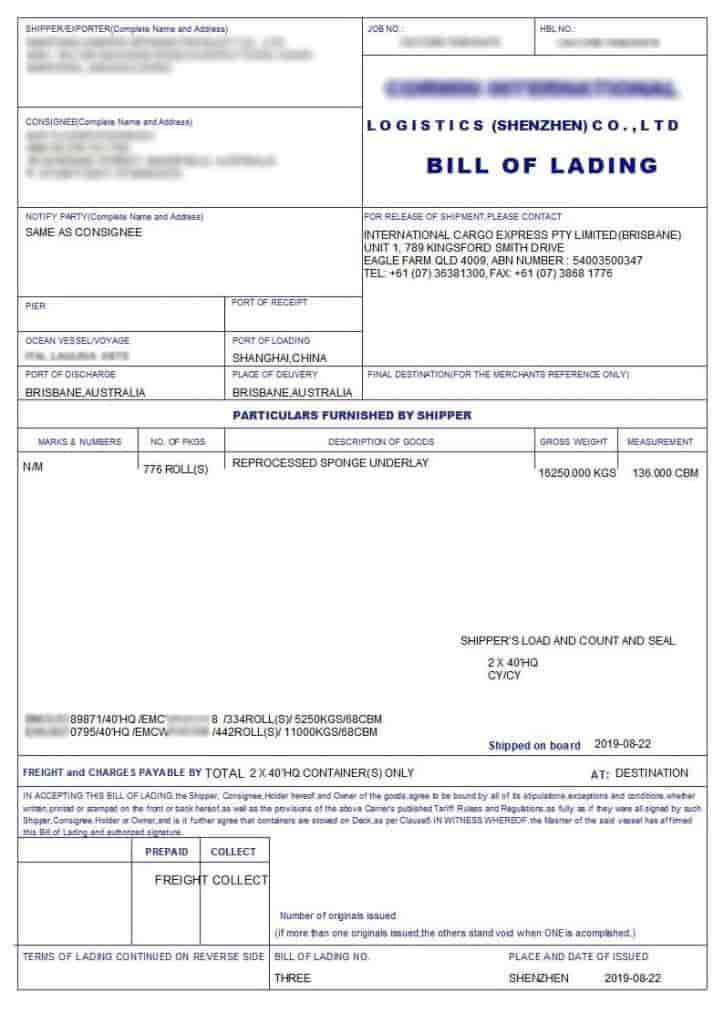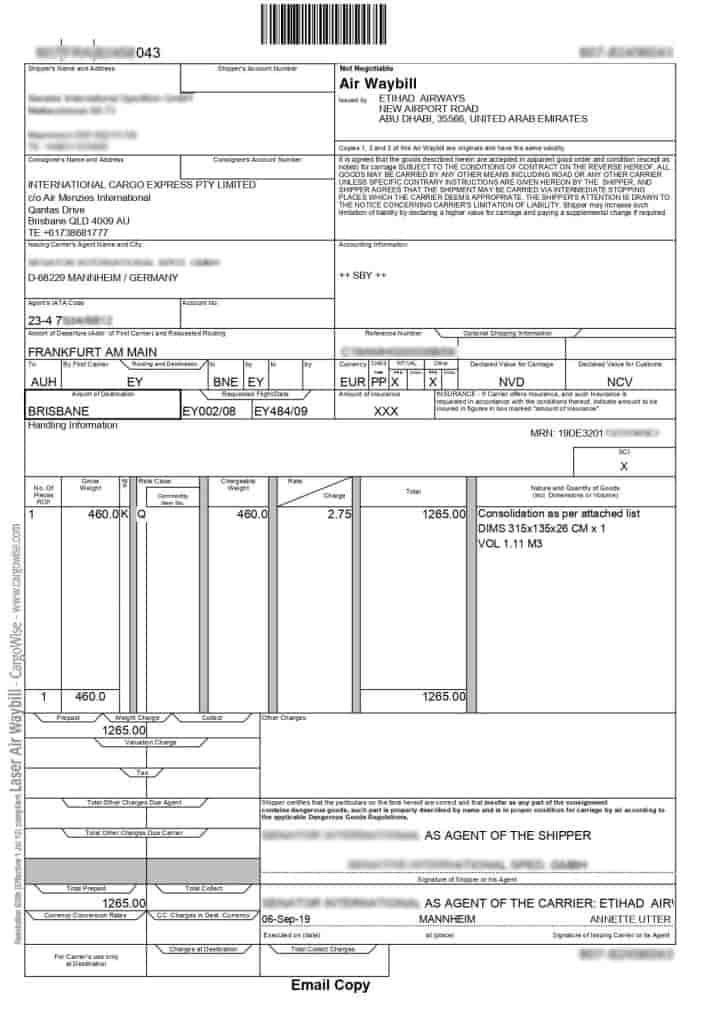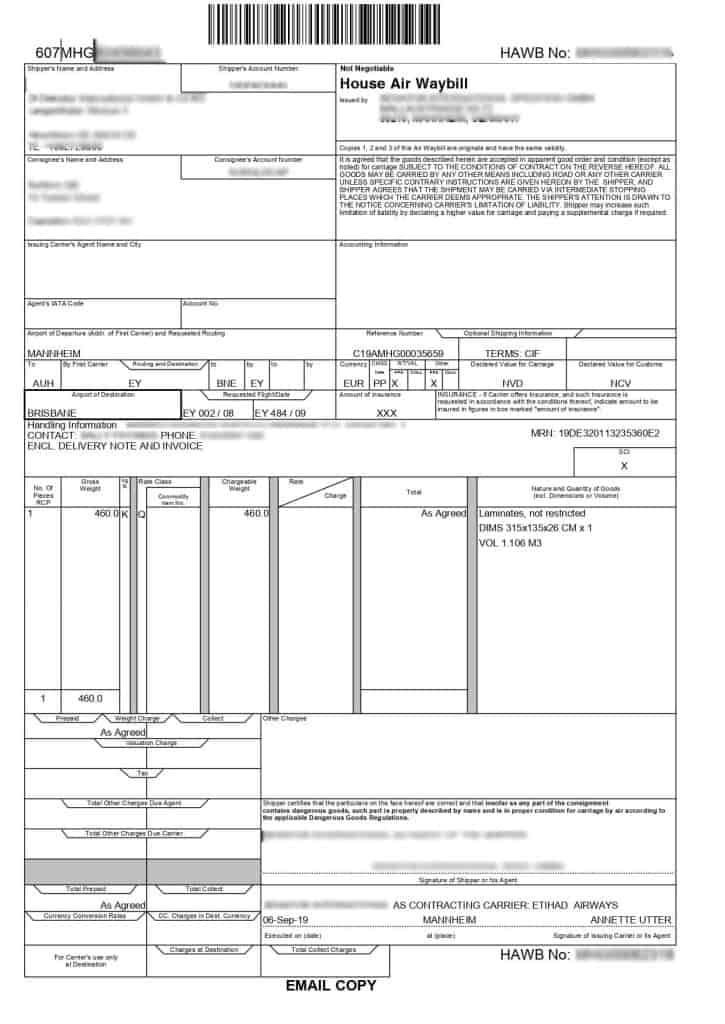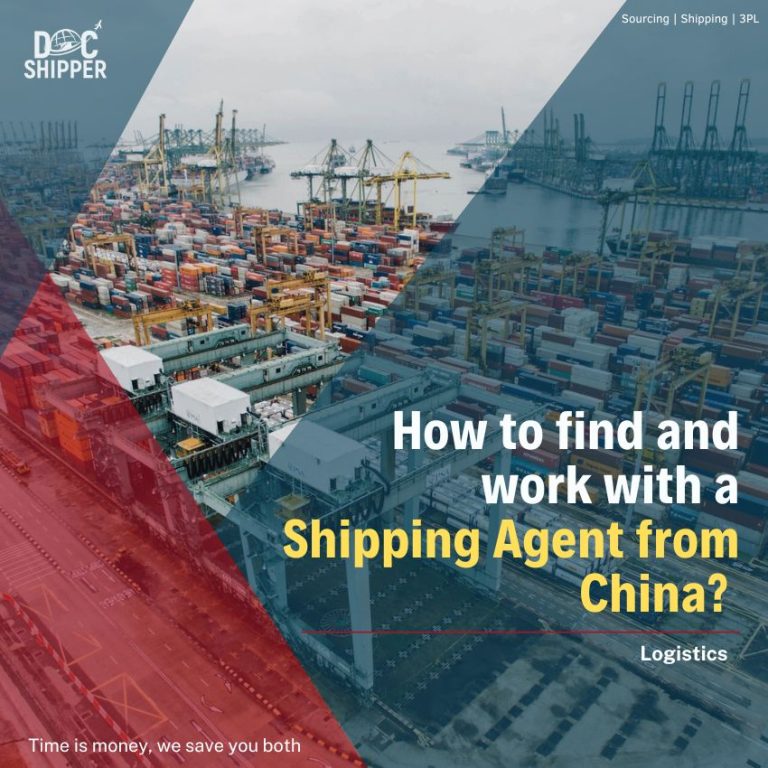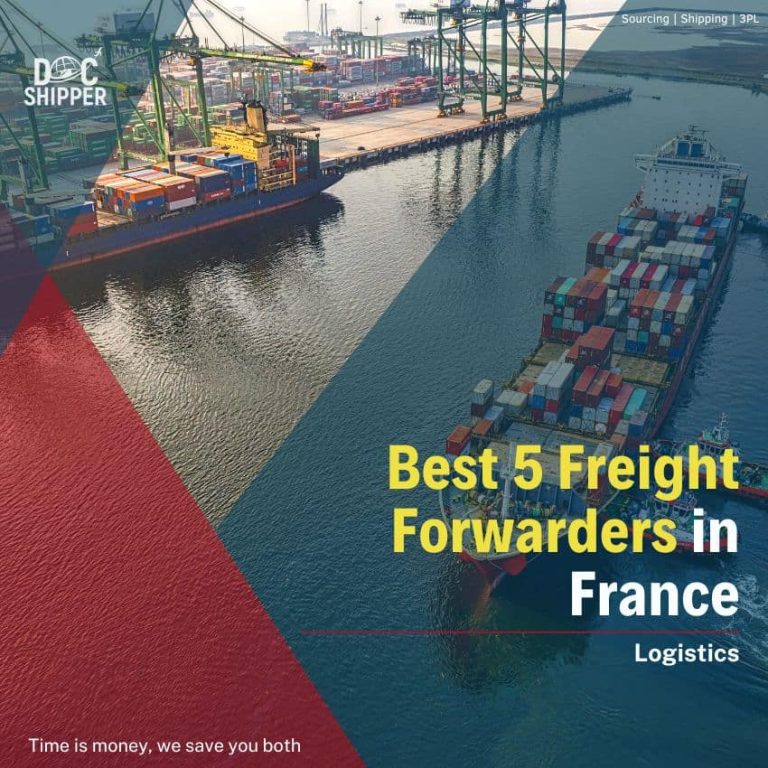Don’t worry if, during your first transaction, the term “Bill of Lading” looks foreign to you. We’ll clarify the characteristics of this renowned document. The Bill of Lading (or B/L) is one of the key commercial documents used for transactions requiring transportation by land, air, or rail. A carrier will give a shipper a bill of lading to affirm that the goods have been received in good order and are prepared for shipping. These things will then be delivered to the recipient by the carrier. The Bill of Lading ultimately acts as a transportation agreement (usually for maritime transit) between the shipper, recipient, and carrier. This article will serve as an introduction to the document, enabling you to understand its purpose and how to approach it successfully.
What is a Bill of Lading?
The bill of lading is a document that a carrier gives to a shipper to affirm that the items have been received in excellent shape and are prepared for shipping. The transporter will next deliver these things to a recipient. In the end, the Bill of Lading acts as a contract of carriage, stipulating the terms of the transportation between the shipper, recipient, and carrier.
What are the Bill of Lading’s roles?
Receipt confirmation
A Bill of Lading is necessary for the execution of shipments. For commodities to move from point A (such as the country of origin) to point B, B/Ls must be issued (e.g., the destination country). It is a document used for maritime shipping in which the carrier or its representative acknowledges receiving the listed items.
Property title
The Bill of Lading acts as the commodities’ title of ownership after they arrive at their destination. To ensure that the shipment is released by the carrier and to establish ownership, the designated recipient must show the bill of Lading. In this sense, it serves as proof of delivery confirmation.
Payment guarantee
The original Bill of Lading could occasionally be kept by the shipper until payment is made. In this case, the products won’t be available to the recipient until payment has been received and the Bill of Lading has been released.
Who emits the Bill of Lading?
The only organization permitted to issue the Bill of Lading is the “carrier.” Although not all freight forwarders are NVOCCs, the term “carrier” in the context of maritime freight transportation can refer to either an ocean carrier (Vessel Operating Common Carrier) or a Non-Vessel Operating Common Carrier (NVOCC), also known as a freight forwarder (such as DocShipper). Both domestic and foreign deliveries may need a bill of lading.
What information do you have to find in a bill of lading?
- the names of the shipper and the consignee
- the names of the ports of departure and destination
- the name of the shipping line
- the dates of departure and arrival
- a detailed list of goods transported with the number of packages and the type of packaging
- marks and numbers on the packages
- weight and/or volume of the cargo
- tariff and amount of freight.
The consequences of a lack of precision in the bill of lading
Mistakes in the preparation of bills of lading have resulted in disastrous consequences for certain transportation companies. For instance, in 2019, a court in New South Wales ruled that a freight forwarder must pay damages exceeding $800,000 for engaging in “misleading conduct.” This verdict stemmed from the bills of lading giving the false impression that they originated from maritime carriers when, in fact, they did not.
Another case serves as an example:
A Turkish trader, conducting business in Syria, procures steel from Ukraine through an intermediary. The transaction is financed via a documentary credit opened with a French bank, naming the appointed agent as the beneficiary. A Turkish bank confirms the credit, the necessary documents, including the charter-party bill of lading, are dispatched, and the documentary credit is activated.
However, two months later, the same party files a complaint in Turkish courts, alleging money laundering, fraud, and forgery/counterfeiting. They notify the beneficiary that any payment is contingent upon the outcome of the criminal proceedings. Consequently, the principal refuses to release the documents, contesting the settlement of the documentary credit.
Specifically, the issuing bank, having fulfilled its commitment, concludes that execution is unnecessary due to the fraud perpetrated to its detriment. The court of appeal grants a stay while awaiting the resolution of the criminal proceedings in Turkey, relying on Article 4 of the Criminal Procedure Code and the principle that “criminal matters take precedence over civil matters.” The ruling emphasizes that the principal’s refusal to release the documents was not solely due to document irregularities, but rather to suspicions surrounding the legality of the transaction.
These suspicions arise from indications that the seller is an empty entity, the purportedly loaded vessel does not exist, and the bill of lading is fraudulent. As a result, the autonomy of the documentary credit must yield to suspicion of fraud. The mere initiation of fraudulent activities is enough to impede the independent and irrevocable commitment made under the documentary credit.
Who is the bill of lading for?
Bills of lading serve various purposes for different parties involved in the shipping process:
Shipper
The shipper, who is usually the seller or shipping company, relies on the bill of lading as both evidence of shipment and a contractual agreement with the carrier. It includes comprehensive details about the shipment, such as the nature of the goods, quantities, packaging requirements, and delivery instructions. The shipper uses the bill of lading to ensure that the goods are transported in compliance with the agreed-upon terms.
Customs broker or freight forwarder
These professionals play a crucial role in facilitating customs clearance at international borders. They use the bill of lading to verify essential information about the goods, including product specifications, customs codes, serial numbers, and more. This enables them to prepare the necessary documentation for smooth import or export processes and ensures compliance with customs regulations.
Consignee
The consignee, who is the buyer or recipient of the goods, relies on the bill of lading as proof of ownership and entitlement to receive the goods. It contains vital delivery information, such as the consignee’s name, delivery address, and payment terms. The consignee utilizes the bill of lading to claim the goods upon arrival and to address any potential issues related to delivery or the condition of the goods.
Import bill of lading steps
Example: If the goods are imported by a freight forwarder under Ex Works (EXW) conditions (refer to Incoterms), here is the journey of the bill of lading:
Export bill of lading steps
This is the process if the goods are exported:
DocShipper Advice
Is Your Bill of Lading Accurate?
Providing accurate information in your bills of lading is essential. That’s why you have to be extremely careful when providing these documents. You may call a freight forwarder to take care of this step and avoid a loss of time. Contact us for free.
The different kinds of B/L
There are several distinct kinds of bills of lading. They differ depending on the issuer, function, transmission mechanism, buyer-seller connection, and degree of buyer protection, among other things.
The ocean bill of lading, Sea Waybill, House Waybill, Master Air Waybill, House Air Waybill, and occasionally the Switch Bill of Lading are the primary bills of lading used in international transportation.
Each of them will be discussed below. Bills of lading can be divided into two primary categories: those that are negotiable and those that are not.
Negotiable and non-negotiable bills of ladings
First, you should note that these two conditions only apply to sea freight; for air freight, the terms are Master Air Waybill and House Air Waybill.
A negotiable bill of lading is the original one; it’s negotiable and legal because it represents the title to the property of the goods.
A non-negotiable bill of lading is a copy of the originals and doesn’t represent any title to the property. Original bills of lading (negotiable) transferred to a third party, such as a freight forwarder, must have the consignee’s endorsement, much like a check. The freight forwarder is in charge of making sure that the cargo is delivered to a qualified authority when it is in a negotiable position. Before releasing the consignee or their representative while using the NVOCC services of the freight forwarder, the freight forwarder must make sure that they receive the original (negotiable) bill of lading. An error in this process could make the forwarder responsible for the value of the goods in the event that the shipper and consignee’s agreement is not upheld.
Contrary to sea freight, in air freight, documents are classified as non-negotiable sets of documents, except if the intermediary is a bank. Moreover, the AirWaybill can replace the non-negotiable B/L.
Ocean bill of lading
They are often used when the shipper wants to maintain control over the payment by the consignee (buyer) for the goods and are produced by maritime carriers, who act as the carrier in the case of containerized shipments by sea. To make sure that payment has been made before the items are released to the consignee, the original bill of lading will be needed.
Depending on the options the carrier provides, the document can be processed in a number of ways once payment has been received. The carrier will accept the original bill of lading in exchange for a telex release, which is a digital counterpart of the B/L. The consignee receives the original bill of lading by courier to deliver to the carrier for the goods’ release.
Sea Waybill of Lading
It’s a non-negotiable document that can replace the bill of lading, and thanks to this, it’s not necessary for the shipper to control the release of the goods.
House Bill of Lading (Hbol)
A transport document used for domestic or inland goods is the home bill of lading. The items, parties involved and transportation circumstances are all given in great detail.
When transferring products within the same nation, the House Bill of Lading is a crucial component in maintaining accountability and traceability. An internal bill of lading is created when the freight is organized through an NVOCC / freight forwarder for maritime transport. Based on the needs of the shipper, this can be handled as a negotiable or non-negotiable option. The term “express bill of lading” may occasionally be used to describe a non-negotiable option.
Master Airway Bill of Lading (MAWB)
Airline transport documents known as Master Air Way Bills (MAWBs) are utilized for air freight shipments. Except for when the goods are sent “on consignment,” these documents are non-negotiable.
This usually indicates that the cargo was arranged through a bank, in which case a bank endorsement is required before the carrier releases the freight. Usually, a House Air Way Bill is created from the shipper to the consignee, and it is arranged from one freight forwarder to another.
House Airway Bill Of Lading
This is the House Air Way Bill (HAWB) for combined air freight shipments that were issued by a freight forwarder. As long as they state that the issuer accepts responsibility as a carrier or serves as an agent of a designated carrier, HAWBs are processed in the same manner as MAWBs.
Multi-modal bill of lading
This kind of bill of lading is the one that you may use when your goods are transported with different kinds of freight.
Bill of lading
These bills of lading cover items that are primarily transported by water, followed by land or rail to their destination. Take care to avoid combining them with multimodal bills of lading.
Switch Bill of lading
This kind of bill of lading is used when the supplier’s information has to stay secret. As an example, when a buyer sells to a third party in a Triangle shipment, a second Bill of Lading is generated by substituting the first one with the new information.
Dirty Bill of Lading
This is the opposite of a “clean” bill of lading; it’s used when the goods are received with problems / in a bad state.
Straight Bill of Lading
This type of bill of lading is used when the goods have already been paid for and are delivered immediately to the recipient.
DocShipper Alert
Need Help Choosing a Bill?
If you feel confused and need help understanding all these terms, we are here to give you further information and take care of all the steps of your expedition. Contact us to get a free quote. If you don’t know which bill of lading is most suited to your situation, call us.
Online Bill of Lading: Telex version and Express version
Instead of several kinds of bills of lading, Telex release and Express release are ways to release the bill of lading.
Telex version
The carrier or agent at the loading port will send an EDI email or telex message to inform their agent at the discharge port that the shipper has given over some or all of the original bills of lading that were issued to them. As a result, the items can be transferred to the designated consignee indicated on the bill of lading at the discharge port without the need to present the original bill of lading.
Express Version
In that it can be electronic, the Express Release Bill and the Telex Release are comparable. The Express Release is different in that a paper copy of the bill of lading is not provided. The Express Release offers several benefits in the absence of manufacturing physical originals, but it should only be utilized in extremely narrow situations.

The indemnity letter
A claim for compensation in the event of damage, loss, or delay during the international shipment of goods is declared in a letter of indemnity. This letter is often sent to the responsible transportation firm or logistics company by the shipper or consignee of the items. The following details ought to be in the letter of indemnity:
- All the shippers’, consignees’, and transportation companies’ contact information.
- A thorough description of the damaged or lost goods that includes references, the amount, the worth, and any other pertinent details.
- Damage sustained, including its type (damage, loss, or delay), as well as when it happened.
- Supporting documentation for the compensation claim, such as purchase invoices, delivery receipts, inspection reports, photos, etc.
Depending on the terms and conditions outlined in the shipping contract or any relevant foreign rules, the terms and steps for indemnification may change.
DocShipper info
How Can DocShipper Simplify Trade?
By managing all phases of international transportation, including customs clearance, DocShipper assists small and medium-sized businesses (SMEs) and individuals with importing and exporting. Get a quote
FAQ | Bill of Lading: Definition, Template, Types
The bill of lading should typically include the following information:
- Shipper's Information: Name and contact details of the party responsible for shipping the goods.
- Consignee's Information: Name and contact details of the party to whom the goods are being shipped.
- Carrier's Information: Name and contact details of the carrier or shipping line responsible for transporting the goods.
- Port of Loading: The location where the goods are being loaded onto the vessel.
- Port of Discharge: The destination port where the goods will be unloaded from the vessel.
- Description of Goods: Details about the goods being shipped, including quantity, weight, dimensions, packaging, and any identifying marks or numbers.
- Shipping Terms: The agreed-upon terms of shipment, often referenced by an Incoterm (e.g., FOB, CIF) that defines the responsibilities and obligations of the buyer and seller.
- Freight Charges: The cost of shipping and any additional charges related to the transportation of goods.
- Container or Equipment Details: Information about the container or equipment used for shipping, such as container numbers or equipment identification.
- Signature and Date: The signature of the shipper or authorized representative, along with the date of issuance.
A bill of lading may be provided per shipment or per container, depending on the request of the client (exporter, shipper, or freight forwarder). There is a chance to have: 3 bills of lading for a single container or 3 bills of lading for three containers The contract, purchase order, or letter of credit may specify the type of bill of lading to be issued, the number of originals/copies, and the number of bills of lading for the shipment or container.
The OB/L (Ocean Bill of Lading) number is typically provided by the shipping line. It is assigned by the shipping line as a unique identifier for the specific bill of lading issued for the shipment. However, in some cases, the freight forwarder may also play a role in obtaining and providing the OB/L number, especially if they are acting as an intermediary between the shipper and the shipping line. The specific arrangement may vary depending on the contractual agreements and responsibilities between the parties involved in the shipment.
Endorsing a maritime bill of lading involves transferring the rights to the goods to another party. Here are the steps: Check the endorsement clause on the bill of lading. Fill out the endorsement, indicating the name of the beneficiary, and sign it. Physically hand over the original bill of lading to the beneficiary. Inform the shipping agent about the endorsement. Adhere to local regulations and contractual terms. Please note that these steps are a general guideline, and it is important to consult with legal and shipping professionals to ensure compliance with specific requirements and regulations.

